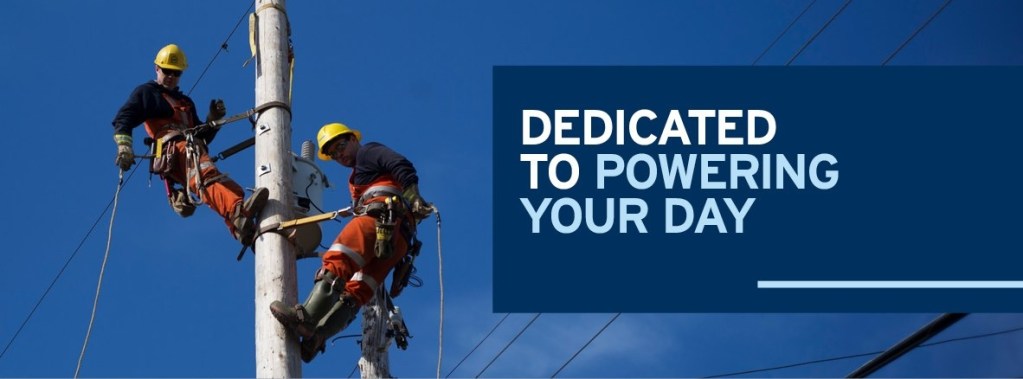Emera’s board decided to give it to its CEO. But at the same time, Emera’s subsidiary, Nova Scotia Power, is asking the rest of us to pay a 10 per cent rate hike so it can run what it calls a ‘reliable business.’ Something does not compute.
On Thursday, March 17 — a day that is all about the green and the blarney — we learned that Scott Balfour, the president and chief executive officer of Emera, took home $8.28 million last year in salary, bonuses and other benefits. For comparative purposes, as a CBC report helpfully noted, that’s nearly $500,000 more than he pocketed in 2020 — an increase of six per cent in one year.
Not bad, but chump change really when you compare it with how much more Balfour is pocketing today than in his previous job as president of Aecon Group, a publicly-traded Canadian construction company. When he left that job in 2011 to join Emera, he was taking home around $2 million a year.
So, in a country where the average hourly wage has hardly changed since the 1970s, Scott Balfour’s annual compensation has increased by 400 per cent in just a decade.
From a Nova Scotia perspective, of course, Emera is not just another private company.
These days, Emera likes to bill itself as “a team of experts focused on safely delivering cleaner, affordable and reliable energy to our customers in Canada, the US and the Caribbean…”
Those of us with longer memories will remember that fancy-pumps Emera was born plain old Nova Scotia Power, a successful publicly-owned provincial electric utility that then-Progressive Conservative Premier Donald Cameron peddled to private investors for what he hoped would be short term gain in 1992.
Although those investors ultimately transformed the utility into an unregulated, publicly traded $32.2 billion holding company, it’s worth noting Emera never did get rid of NSP, the guaranteed-return cash cow that gave it its first life.
So, after the usual corporate bafflegab about its “team of experts” and all that “cleaner, affordable, reliable” hoohah, there is this:
We primarily invest in regulated electric and gas utilities, driving predictable returns and steady growth for our investors, enabling us to reinvest in our teams, our companies and our communities. (The bold face is mine.)
One of Scott Balfour’s numerous corporate hats is as chair of Nova Scotia Power.
So, how’s he done?
Nova Scotia Power recently applied for a rate increase of 10 per cent over the next three years.
Buried deep inside thousands of pages of its application-ese, the company also quietly asked the province’s utility review board to “relax” some of the more than a dozen “performance and customer service benchmarks” it had ordered the company to meet in 2016.
The company didn’t meet six of those benchmarks for the next three years running and was even fined $250,000 in 2019 for its failure.
But it’s kept on failing. Complained the regulator in 2021:
It is concerning to the board that NS Power does not seem to recognize that a fundamental outcome anticipated from establishing the performance standards is to produce continuous improvement in reliability, customer service and storm response.
Nova Scotia Power — keep in mind Emera’s professed devotion to cleaner, affordable and reliable energy — also asked the regulator to create a special new fee it could slap on customers who generate their own “cleaner, affordable and reliable” electricity using solar or wind energy and then sell some back to the power company.
In the face of public outrage after this outrage became public — many saw it as the company’s way to undermine the greening of the grid — Nova Scotia Power shelved that proposal. For now.
But the company still wants also its guaranteed nine per cent profit margin — plus a sweetener that would allow it to scoop up to a 9.5 per cent return on equity.
Explained Peter Gregg, the recently appointed president and CEO of Emera’s Nova Scotia Power subsidiary: “We’re not asking for more than we need to run a reliable business,”
No more?
Reliable?
Let’s go back to the question. And ask it this way. How’s Scott Balfour doing for Nova Scotia Power customers — us — to justify his compensation package? (And don’t give me that sophistry about how much of his salary comes from NSP and how much from… there’s one big company here.)
Consider Emera’s “compensation philosophy. The purpose of Emera’s executive compensation program,” explained last week’s management information circular, is to:
- align the interests of executives with the interests of Emera’s shareholders and customers; (my emphasis again)
- attract, retain and motivate highly qualified and high-performing executives; and
- reward Emera’s executives for sustained growth in shareholder value.
Rate increases, lowering performance standards, squeezing out green energy competitors, maintaining and even increasing the guaranteed profit margin… those do all seem to align neatly with shareholder interest in “sustained growth in shareholder value.”
As my colleague Jennifer Henderson noted:
Although the multinational company that owns Nova Scotia Power and electric and natural gas utilities in Florida, New Mexico, and the Caribbean did not meet its EPS or “Earnings Per Share” objective, every Emera shareholder still saw a 4% increase on last year’s dividend and a TSR (Total Shareholder Return) of 22% on their investment.
Not bad, huh?
Not bad at all. If you’re a shareholder. But increasing shareholder value seems designed to decrease value for Nova Scotia Power’s customers.
Given all of that, with whose interests do you think Emera’s board sees itself aligned?
Sorry, time’s up.
So, here’s a different question. How could Scott Balfour’s compensation package be better spent on… well, let’s start with improving services to the customers of Nova Scotia Power?
There are currently postings for a number of “Maintenance Person Certified (Shift)” at Nova Scotia Power. These are union jobs paying $42.20 an hour. You could hire more than 100 of them with Scott Balfour’s take-home alone. Or, you could get even more bang for your buck by hiring close to 180 also unionized Utility Worker IIs, whose duties include “repair maintenance duties” at $25.37 an hour.
How many of us who have spent hours, often days, waiting for Nova Scotia Power to restore our power after a storm — or even a light breeze — believe $8 million might be better spent improving electricity reliability?
But let’s make this a game anyone can play.
What would you do with Scott Balfour’s $8 million?
Here’s a modest off-the-grid suggestion to start us off. We could buy 720 emergency crisis shelters at $11,500 each to house the homeless. Maybe NSP could throw in free electricity.
Your turn.
***
A version of this column originally appeared in the Halifax Examiner.
To read the latest column, please subscribe.








 STEPHEN KIMBER, a Professor of Journalism at the University of King's College in Halifax and co-founder of its MFA in Creative Nonfiction Program, is an award-winning writer, editor and broadcaster. He is the author of two novels and eight non-fiction books. Buy his books
STEPHEN KIMBER, a Professor of Journalism at the University of King's College in Halifax and co-founder of its MFA in Creative Nonfiction Program, is an award-winning writer, editor and broadcaster. He is the author of two novels and eight non-fiction books. Buy his books